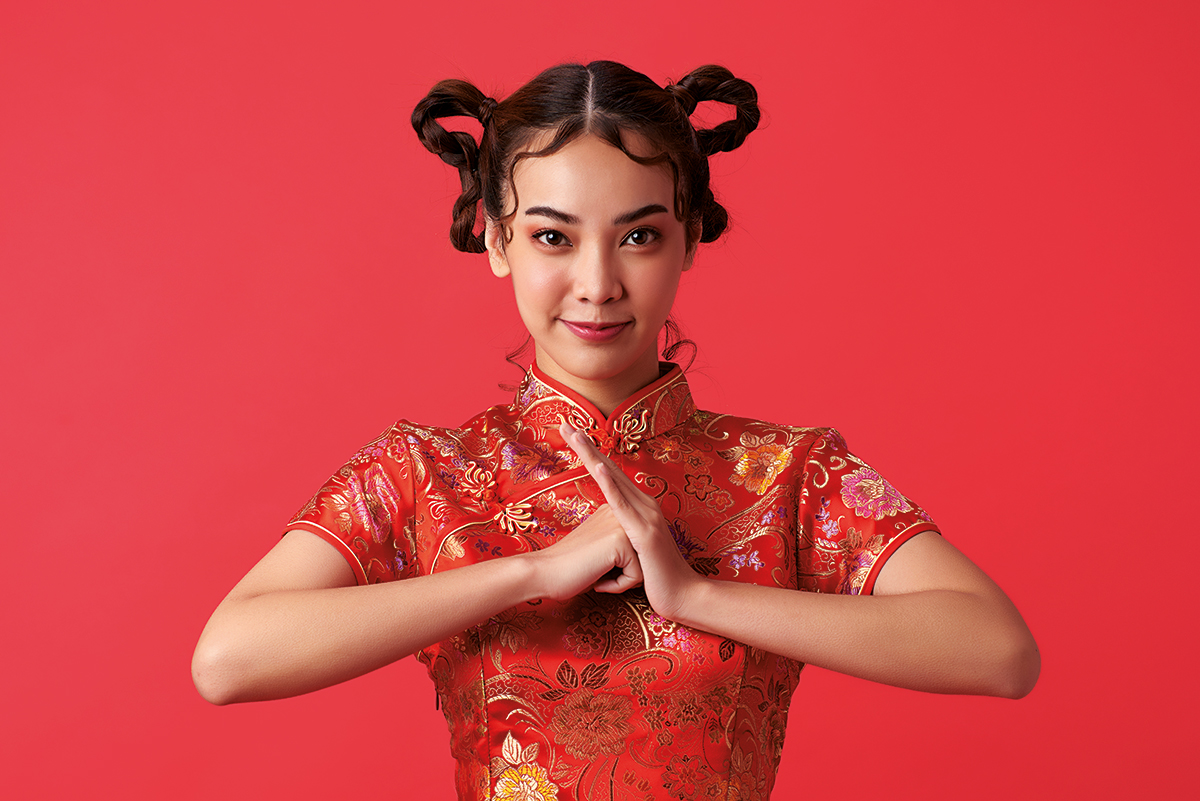In China, there is a word, guochao, which translates literally as ‘national trend’. But in recent years it has become a catch-all term for homegrown brands and consumer goods whose appeal is rooted in their use of Chinese culture.
In many cases, guochao turns to traditional culture as a source of inspiration to create a fusion of the old and the new, but there is one subculture in which tradition and modernity intersect in startlingly vivid and dichotomous fashion: hanfu.
Hanfu refers to traditional clothing styles worn during the periods of Chinese history marked by Han rule (202 BC – 2020 AD). While the history of the style can be traced back more than 2,000 years, it now more commonly references the era between 618 to 1644 – the dynasties of Tang, Song, and Ming. The style generally comprises two pieces: a knee-length jacket or robe; and an ankle-length skirt or pants. Led largely by China’s youth, hanfu has become both a fashion trend and a political movement – a source of beauty and of confidence, and a symbol of nationalist pride for China at large.
Although ethnic Han dress has a distinctive and storied history dating back millennia, the hanfu style of today emerged in 2003 when electrical grid worker Wang Letian wore a homemade shenyi robe on the streets of Zhengzhou. Wang’s photo was seen by Zhang Congxing, a journalist for Singaporean newspaper Lianhe Zaobao; their resulting interview is widely regarded as the point at which hanfu re-entered China’s public consciousness. In it, Wang recalls how people would often mistake him for a Japanese man wearing a kimono – not realising that the kimono, along with the Korean hanbok, were originally imitations of hanfu.
Part of what drives these misconceptions is the history of hanfu and the role played by China’s last dynasty: Qing. Rising to power in 1644, the Qing dynasty was led by ethnic Manchus from the country’s northeast who, in their consolidation of power, suppressed elements of traditional Han culture such as hanfu, supplanting them with their own Manchurian styles. Over time, these styles and codes filtered down from the ruling class into the populace and, after three centuries of Qing rule, Manchurian clothing became Chinese clothing – a cultural victory so profound it continues to shape Western views of what constitutes traditional Chinese clothing. We’d never guess, for instance, that the form-fitting, short-sleeved qipao dress, or the boxy, Mandarin-collared tangzhuang jacket could be considered anything other than quintessentially Chinese, when in fact they are items with a complex and contentious cultural history.
For many young Chinese, hanfu is about more than fashion or beauty; it is a way of honouring tradition and reviving a culture that was, and still, is both overlooked and misunderstood. And it is a movement that is gaining immense traction. According to the Chinese consulting agency iiMedia Research, between 2015 and 2019 the value of the hanfu market in China grew more than 20 times, from ¥190 million to ¥4.5 billion, projected to exceed ¥10 billion (around $2.2 billion) by the end of 2021. This growth is overwhelmingly driven by Gen Z consumers who are turning to hanfu as a way of both standing out in a world of mass-produced fashion and embracing tradition as others of their generation have done around the world.
To wear hanfu, then, is to celebrate China. As the nation searches for an identity in the face of ongoing Westernisation, hanfu offers a link to the past as well as a vision of the future: one in which China’s rich history is overlooked no more.
For many young Chinese, hanfu is about more than fashion or beauty; it is a way of honouring tradition and reviving a culture that was, and still, is both overlooked and misunderstood. And it is a movement that is gaining immense traction.







